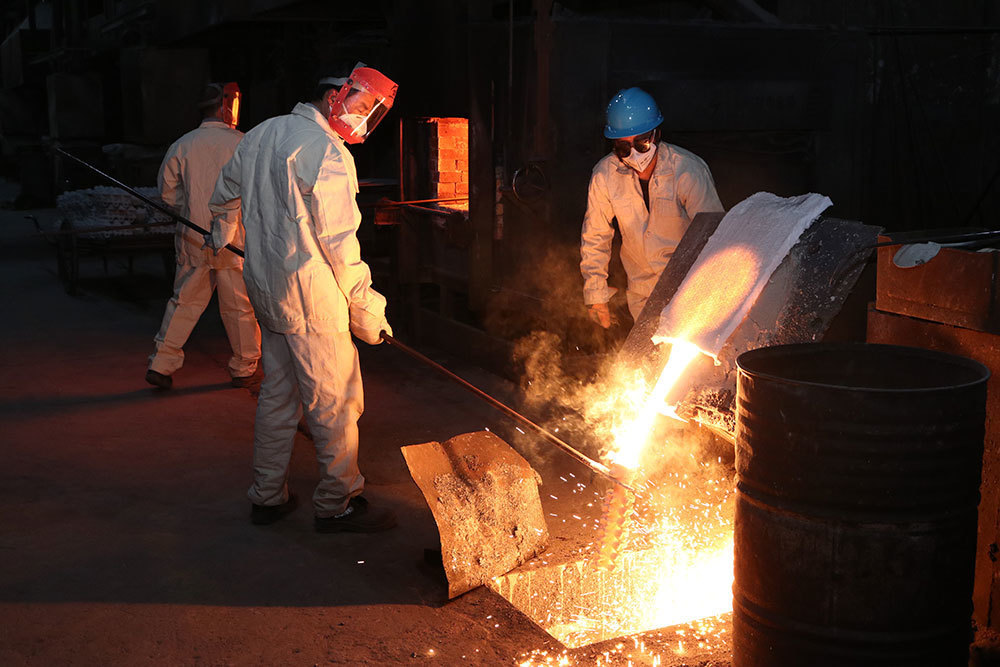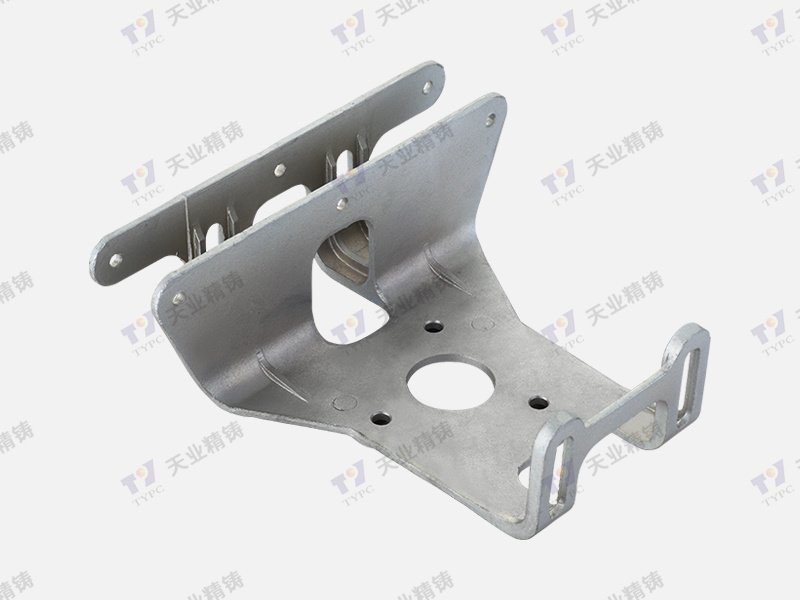2025-03-26
Future Trends in the Alloy Steel Casting Industry: Innovations and Insights
Future Trends in the Alloy Steel Casting Industry: Innovations and Insights
Table of Contents
- 1. Introduction to Alloy Steel Casting
- 2. Market Analysis of Alloy Steel Casting
- 3. Technological Advancements in Casting Processes
- 4. Sustainability Practices in the Alloy Steel Casting Industry
- 5. Quality Control Initiatives in Alloy Steel Casting
- 6. Applications and Demand for Alloy Steel Castings
- 7. Challenges Facing the Alloy Steel Casting Industry
- 8. Conclusion
- 9. FAQs
1. Introduction to Alloy Steel Casting
The **alloy steel casting industry** plays a pivotal role in supplying essential components across various sectors, from automotive to aerospace. Alloy steel, known for its enhanced properties such as strength, toughness, and wear resistance, is increasingly favored for casting applications due to its adaptability and performance characteristics. As industries evolve, so does the demand for innovative casting solutions that meet the rigorous standards of modern manufacturing.
This article delves deep into the **future trends** that are expected to shape the alloy steel casting industry. By understanding these trends, stakeholders can better position themselves in the market, harnessing new technologies and practices to drive growth and sustainability.
2. Market Analysis of Alloy Steel Casting
The global market for alloy steel castings is projected to experience significant growth in the upcoming years. Several factors contribute to this upward trend:
2.1 Growing Industrialization
Emerging economies are witnessing rapid industrialization, leading to increased demand for machinery and infrastructure. This growth boosts the need for durable and reliable alloy steel castings.
2.2 Technological Advancements
Innovations in **casting technologies**, such as 3D printing and advanced molding techniques, are enhancing production efficiency and allowing for more complex designs. These advancements are expected to drive market growth by reducing lead times and costs.
2.3 Demand from Key Sectors
Key sectors such as automotive, oil and gas, and construction are heavily reliant on alloy steel castings. The push for lighter, stronger components is driving innovation and investment in this area.
2.4 Competitive Landscape
The alloy steel casting industry is characterized by a competitive landscape, with numerous players vying for market share. To stay ahead, companies must focus on quality, innovation, and customer service.
3. Technological Advancements in Casting Processes
As we look toward the future, several technological advancements are poised to transform the alloy steel casting industry.
3.1 3D Printing in Alloy Steel Casting
3D printing, or additive manufacturing, is revolutionizing how components are designed and produced. This technology allows manufacturers to create complex geometries that were previously impossible with traditional methods. As a result, **3D-printed alloy steel castings** offer significant advantages, including weight reduction and improved performance.
3.2 Automation and Robotics
The integration of automation and robotics in the casting process enhances efficiency and precision. Automated systems can streamline production, reduce human error, and lower operational costs. As industries continue to embrace Industry 4.0, the demand for automated casting solutions is expected to grow.
3.3 Advanced Simulation Technologies
Simulation software enables manufacturers to predict the behavior of alloys during the casting process. These tools can optimize designs and reduce the need for physical prototypes, saving both time and resources. By investing in advanced simulation technologies, companies can significantly enhance their production capabilities.
4. Sustainability Practices in the Alloy Steel Casting Industry
Sustainability has become a crucial focus in the alloy steel casting industry. Manufacturers are increasingly seeking eco-friendly practices to meet regulatory requirements and consumer expectations.
4.1 Recyclability of Alloy Steel
One of the most significant advantages of alloy steel is its recyclability. The industry is focusing on improving recycling processes to recover valuable materials from scrap components, reducing waste and lowering the carbon footprint.
4.2 Energy-Efficient Casting Techniques
New casting techniques aim to minimize energy consumption during production. For example, utilizing electric furnaces instead of traditional gas-based systems can significantly reduce greenhouse gas emissions.
4.3 Sustainable Sourcing of Raw Materials
Companies are increasingly prioritizing the sourcing of raw materials from sustainable suppliers. This practice not only supports environmental responsibility but also enhances a company's reputation among environmentally conscious consumers.
5. Quality Control Initiatives in Alloy Steel Casting
Ensuring the quality of alloy steel castings is paramount for manufacturers. As the industry evolves, so do the standards and practices surrounding quality control.
5.1 Implementing ISO Standards
Many manufacturers are adopting ISO standards to ensure consistent quality across their products. These standards provide a framework for quality management, helping companies meet customer expectations and regulatory requirements.
5.2 Non-Destructive Testing (NDT)
Non-destructive testing techniques, such as ultrasonic and radiographic testing, are becoming standard practices in quality control. These methods allow manufacturers to detect defects without damaging the components, ensuring reliability and performance.
5.3 Continuous Improvement Practices
The concept of continuous improvement, or Kaizen, is gaining traction in the alloy steel casting industry. By fostering a culture of ongoing enhancement, companies can identify areas for improvement and implement changes that drive quality and efficiency.
6. Applications and Demand for Alloy Steel Castings
The versatility of alloy steel castings makes them suitable for various applications across multiple industries.
6.1 Automotive Industry
In the automotive sector, alloy steel castings are used for engine components, frames, and suspension systems. The demand for lightweight yet robust materials is driving innovation in alloy steel casting technology.
6.2 Aerospace Industry
The aerospace industry requires high-performance materials that can withstand extreme conditions. Alloy steel castings are increasingly utilized in aircraft components, where strength and reliability are critical.
6.3 Energy Sector
In the energy sector, particularly in oil and gas, alloy steel castings are essential for producing drilling equipment and pipelines. The industry's push for sustainable energy solutions is further driving demand for innovative casting technologies.
7. Challenges Facing the Alloy Steel Casting Industry
While the future looks promising for the alloy steel casting industry, several challenges must be addressed.
7.1 Raw Material Fluctuations
The volatility in the prices of raw materials can significantly impact production costs. Manufacturers must develop strategies to manage these fluctuations while maintaining profitability.
7.2 Skills Gap in the Workforce
As technological advancements reshape the industry, a skills gap is emerging among the workforce. Investing in training and development programs is essential to equip employees with the necessary skills for the future.
7.3 Environmental Regulations
Increasingly stringent environmental regulations pose challenges for manufacturers. Companies must adapt their processes and practices to comply with these regulations while striving for sustainability.
8. Conclusion
The **alloy steel casting industry** is on the brink of transformation, driven by technological advancements, market demands, and sustainability practices. As we move forward, embracing innovation and addressing the challenges ahead will be vital for stakeholders in this sector. By staying ahead of trends and investing in quality and sustainability, companies can ensure their success in an ever-evolving landscape.
9. FAQs
1. What is alloy steel casting?
Alloy steel casting is a manufacturing process that involves pouring molten alloy steel into molds to create components with specific properties and dimensions. It is widely used in various industrial applications due to its strength and versatility.
2. What are the benefits of using alloy steel in casting?
Alloy steel offers enhanced strength, toughness, and wear resistance compared to standard carbon steel. It also allows for greater design flexibility, making it ideal for complex components.
3. How is technology influencing the alloy steel casting industry?
Technological advancements such as 3D printing, automation, and simulation software are improving the efficiency, accuracy, and speed of the casting process, leading to better products and reduced costs.
4. What role does sustainability play in the alloy steel casting industry?
Sustainability is becoming increasingly important, with a focus on recycling, energy-efficient processes, and sustainable sourcing of raw materials. These practices help reduce the environmental impact of casting operations.
5. What are the main challenges faced by the alloy steel casting industry?
Key challenges include fluctuations in raw material prices, a skills gap in the workforce, and the need to comply with stringent environmental regulations. Addressing these issues is crucial for future growth.









